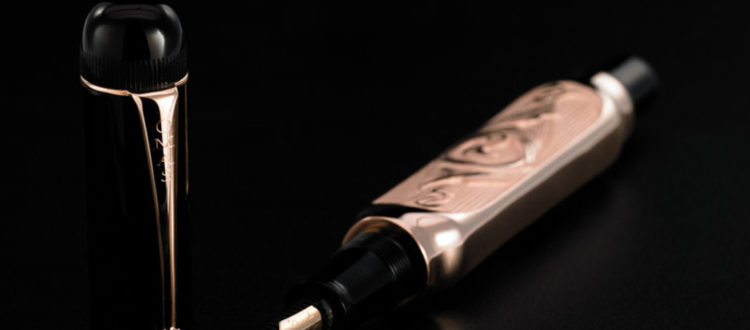A Beginner’s Guide to Fountain Pens
Isn’t a handwritten note more beautiful and personal than an email? Too often in today’s digital world, we get so bogged down by technology that we forget the finer way of doing things. Take a break from furiously typing on your keyboard, and consider the use of a fountain pen and fine paper for your correspondence or a journal entry.
Beyond an economical ballpoint, fountain pens offer a unique writing experience that harkens back to the old-fashioned days before computers were invented. However, they are a bit trickier to use, requiring a learned skill and more attention as you write. Making the switch from ballpoint to fountain pen has been compared with the transition from using cartridge razors to a straight razor.
For beginners, it’s important to understand fountain pens as the artistic, functional writing instruments they are. Here are some of the important things to understand about fountain pens:
- The basic components of a fountain pen are the nib, the feed, and the filling system. Modern nibs are made from gold alloys or stainless steel for these materials’ strength, flexibility, and anti-corrosive properties. The feed is usually black plastic or ebonite, and is the most important part of the pen. It is located at the bottom of the nib, and is the route by which the ink travels from the reservoir to the nib. Inside the pen, the ink reservoir is usually either a cartridge, cartridge converter, or piston.
- There is a unique way of writing with a fountain pen. You should hold your uncapped fountain pen at a 40-55 degree angle with your writing surface, since the ink flows most easily at this angle. As you write, use less pressure than you would with a normal writing instrument, keeping your strokes light. Write by using your shoulder and arm instead of your fingers, to help reduce the pressure.
- Writing with a fountain pen is easier, in some ways, than writing with a normal gel, felt-tip, or ballpoint pen. The mechanics of the ink flow in a high-end fountain pen require far less effort for writing than a normal pen, since you don’t have to press down in order to trigger ink flow. This means that you can write for longer, with more ergonomic writing.
- Fountain pens are more economical and eco-friendly. Fountain pens are writing instruments that are meant to last, in contrast with cheap pens that are thrown away once the ink runs dry, go into landfills, and require you to buy more. The ink reservoir of a fountain pen is refilled for ongoing use, minimizing waste and reducing your writing expenses over time.
- Handwriting improves with the use of a fountain pen. After time spent using your fountain pen, your handwriting will become more efficient. Fountain pens also improve the visual appeal of cursive handwriting.
If you are ready to find the perfect fountain pen, feel free to browse our selection!


